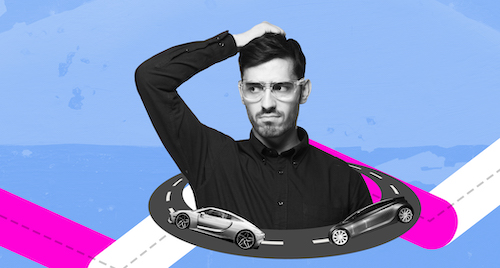Typically, studies about trust and driverless cars emphasize vehicle performance, which is certainly an important factor. But because trust fundamentally involves personal calculations about benefits and risks, McAuslan and Waung say it’s important to examine additional factors that influence these judgements. For example, our feelings about manufacturer brands influence trust, as does our level of faith in government regulators who look out for our safety. (Scrutiny over the relationship between regulators and industry after the Boeing 737 MAX grounding is a good example.) Likewise, the information we consume about technologies appears to impact how much we trust them, which is one of the reasons manufacturers dread stories about test vehicles malfunctioning in ways that harm or kill people.
McAuslan and Waung’s recent research into AVs and consumer trust reveals just how complex — and malleable — trust can be. For their study, they asked participants to read short information sets about AVs that were based on current research and real news accounts. Each emphasized different aspects of AVs: One information set focused on vehicle standards, regulation and research; while another emphasized how quickly manufacturers could get AVs to market. They then asked participants questions intended to evaluate how the information influenced their comfort about riding in an AV. In addition, they explored how these factors interact with another important consumer concern: How much control the human driver would ultimately have over the vehicle.
Some of their results were what you’d expect: Information that emphasized research innovations, regulation and vehicle standards left people feeling more confident about riding in AVs, while the “speed to market” focus left people feeling more tepid. But they also found some of these effects could be mitigated by tweaking how much control they told drivers they’d have. “For example, the lowest trust situation, as you might expect, was when the focus was on speed to market, and you also gave the passenger less control,” Waung says. “But when there was higher control, that actually made up for the concerns people had over speed to market. So trust is impacted not only by multiple factors, but they can also interact with each other.”
Interestingly, this particular combination assessed by Waung and McAuslan’s study highlights a current real-world puzzle faced by manufacturers. Shan Bao, an UM-Dearborn AV researcher and human factors specialist, told us that some manufacturers are seriously thinking about abandoning the development of Level 3 autonomous vehicles. These are “conditionally” autonomous, meaning they still have features like a steering wheel and require the driver to take over in case of emergency. Bao says the reason for jumping directly from Level 2 to Level 4 is mostly about safety: Human drivers simply might not have the reaction or attention skills necessary to quickly take over after prolonged periods of inattention. Ironically then, consumers might be most trusting of a vehicle that manufacturers may not want to bring to market — primarily because of safety concerns.
Such psychological riddles are a typical part of the development process for new mass consumer technologies, and both Waung and McAuslan expect kinks like this will be ironed out by the eventual influence of another important trust factor: people’s direct experience with AVs. Right now, of course, with fully driverless cars still very much in the development stage, those experiences are hypothetical. But McAuslan says as cars start to incorporate more and more autonomous features, and people start to have good experiences with those intermediate technologies, it could prove to be an on-ramp to trusting fully driverless vehicles.
In fact, McAuslan’s own experience adjusting to the lane-departure system in her Jeep Compass might be a good case in point. “I don’t have any problem with the beep-style warnings, but what’s really shocking is if you’re drifting a little, the car will actually give you a little bump to move you back into the center of the lane. At first, it scared the heck out of me. Now, I don’t mind it.”
That might be as good a shorthand as any for how we’ll ultimately learn to trust the machines to handle the driving for us.
###
Story by Lou Blouin. This is the third story in a series exploring the future of autonomous vehicles. For more on this topic, check out: "Why your first driverless car is decades, not years, away," "Designing autonomous vehicles to be pedestrian friendly," and "Building hack-resistant driverless cars." If you're a member of the media and would like to contact Professors Marie Waung and Pam McAuslan for an interview, drop us a line at UMDearborn-News@umich.edu.







